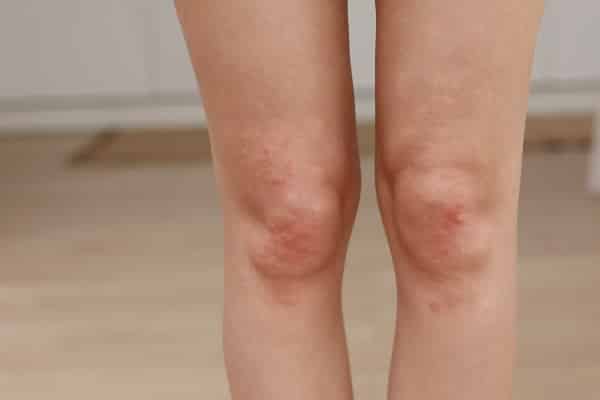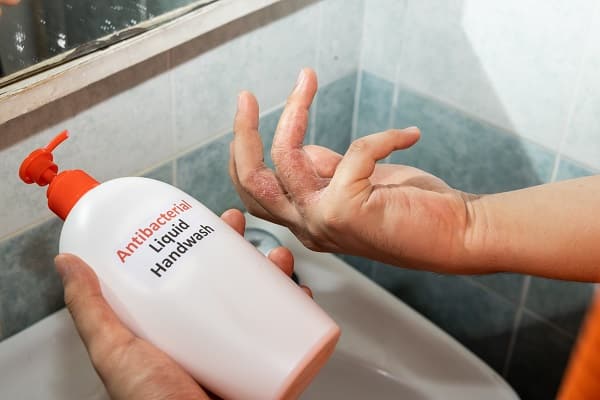Dermatitis is a skin condition that can cause a lot of discomfort and embarrassment. If you are one of the millions of people who suffer from this condition, you know how challenging it can be to manage. In this guide, you will find information on everything from diagnosis to treatment options to living with dermatitis on a daily basis. Hopefully, this information will help you better understand your condition and improve your quality of life.
Contents
What Is Dermatitis?

Dermatitis is a skin condition that can cause intense itching and visible signs of inflammation. It’s generally classified as one of two major types of dermatitis: atopic dermatitis and contact dermatitis. Atopic dermatitis often referred to as eczema, is an umbrella term covering various conditions caused by an overactive immune system. Contact dermatitis is triggered when a person touches an irritant or allergen and causes inflammation when exposed to the skin.
Atopic dermatitis often begins in childhood and can be associated with other medical conditions, such as asthma or hay fever. While the exact cause of atopic dermatitis is not known, it’s believed that genetic factors and environmental triggers are involved.
Contact dermatitis is caused by irritants or allergens and can result from many factors. Some common causes include poison ivy, certain skincare products, latex, nickel in jewelry or clothing, fragrances, and harsh laundry detergents.
Symptoms Of Dermatitis

Depending on the cause and severity of the condition, a number of symptoms can occur with dermatitis. While none are enjoyable, it is crucial that you are aware of the possible red flags. Common symptoms of atopic dermatitis include:
- Intense itching and scratching
- Rash or sores on the skin
- Skin dryness, cracking, or flaking
In addition to these symptoms, people with atopic dermatitis may also experience other issues related to their condition. These can include:
- recurring eye infections
- sinus congestion
- sleep disturbances
Treatment Options For Dermatitis
Although everyone’s skin is different, and they may suffer from various symptoms, there are several treatment options available for dermatitis. When working with your doctor, they will usually start with the most conservative treatments first and may recommend one of several options:
Corticosteroid Creams

Corticosteroid creams are a powerful treatment option for sufferers of dermatitis. These creams contain an anti-inflammatory to reduce the swelling and itching associated with the condition and can even help to prevent the regrowth of rashes. Corticosteroids sometimes come in other forms, such as lotions, gels, foams, and ointments, so there is usually something to suit everyone’s needs or preferences.
It is crucial to apply them as directed by a doctor, as they may cause irritation or thinning of the skin if used incorrectly. However, when appropriately used, corticosteroid creams can provide much-needed relief from uncomfortable dermatitis symptoms.
Calcineurin Inhibitors

Calcineurin inhibitors are another increasingly popular treatment for dermatitis due to their effectiveness in controlling inflammation and suppressing the immune system. Generally, topical creams are preferred when opting for a calcineurin inhibitor due to their ability to offer quick relief with minimal side effects. Despite this, oral options may be necessary if localized spot treatments are ineffective in managing the condition and the area is widespread across the body.
Regardless of delivery method, calcineurin inhibitors can offer a much-needed reprieve from chronically itchy and inflamed skin while minimizing the chances of long-term complications such as secondary infections or more severe outcomes like lymphomas.
Phototherapy

Phototherapy can offer a viable, drug-free treatment option for people suffering from dermatitis. Popularly known as light therapy and UVB therapy, this method of treatment works by exposing affected skin to specific types of wavelengths of light to reduce inflammation. In addition, this exposure helps produce Vitamin D, which is not only effective in managing a range of skin conditions but also holds other health benefits.
Although the process may seem frightening initially, phototherapy treatments are safer than topical medications and typically offer quicker results with fewer side effects and lower costs between visits. Ultimately, those considering phototherapy must speak with their doctor about any risks or underlying conditions they may have that could make the procedure ineffective or dangerous.
Injectable Dupilumab

Injectable dupilumab has shown remarkable efficacy in the treatment of atopic dermatitis. This powerful drug is administered directly into the skin to target eczema-causing inflammation, providing much-needed relief and comfort for countless patients worldwide. In addition, unlike other treatments, such as topical applications, injectable dupilumab can offer more rapid symptom improvement, reaching full effectiveness within two to four weeks, while some topical creams take six weeks or longer.
Not only does truncated treatment time make injectable dupilumab extremely attractive, but its few side effects make it a preferred option for many suffering from this often chronic (and sometimes disfiguring) condition.
Wet Dressing

Wet dressing has been used for years as a treatment for more severe cases of dermatitis, with proven positive results. The therapy soaks the skin in simple water or a solution containing mild topical medications and soothing ingredients such as oatmeal. However, unlike many topical medications, wet dressing therapy goes beyond providing temporary relief and can reduce inflammation and infection while also helping relieve pain associated with dermatitis flare-ups.
Studies have also shown that incorporating wet dressings into your daily routine may promote quicker healing times and prevent the need for stronger medications or other treatments further down the line. So although wet dressing might not always be necessary, it is worth considering as an effective way to manage even difficult-to-control forms of dermatitis.
Tips For Living With Dermatitis

Even with proper treatment, living with dermatitis can sometimes still be challenging. To help you manage your condition and avoid setbacks, here are some tips to keep in mind:
- Pay close attention to potential triggers such as harsh soaps, heat or cold temperatures, detergents, dust mites, pollen, perfume, and smoke. Keeping a diary or log can help you identify your personal triggers and avoid them whenever possible.
- Take extra care when dressing to avoid irritating your skin, such as wearing soft clothing made of natural fibers or loose-fitting fabrics.
- Manage stress through regular exercise, yoga, meditation, or other methods that help reduce anxiety and keep your mind and body healthy.
- Seek support from family, friends, or other dermatitis patients to help you stay positive and motivated as you manage your condition.
- Incorporate foods that improve skin health in your diet and avoid processed foods that can cause inflammation and make your symptoms worse.
Living With Dermatitis Doesn’t Have To Be A Struggle!
Despite the challenges of living with dermatitis, there are many ways to manage your condition and reduce symptoms. Whether through one of the different treatment options available or incorporating techniques into your daily routine to improve your skin health, it is possible to live a happy and healthy life with dermatitis. So if you are struggling with this condition, remember that you are not alone, and there are many tools and resources available to help you manage your symptoms. Speak with a healthcare professional today to learn more about how you can effectively manage your dermatitis and live a happier, healthier life.


